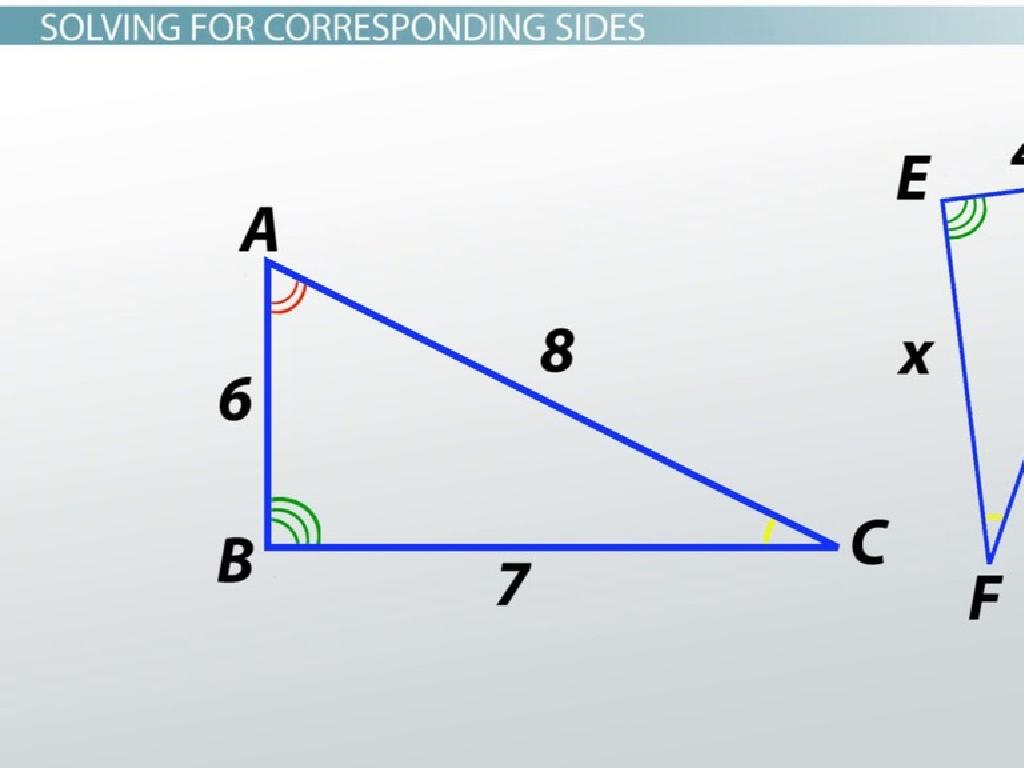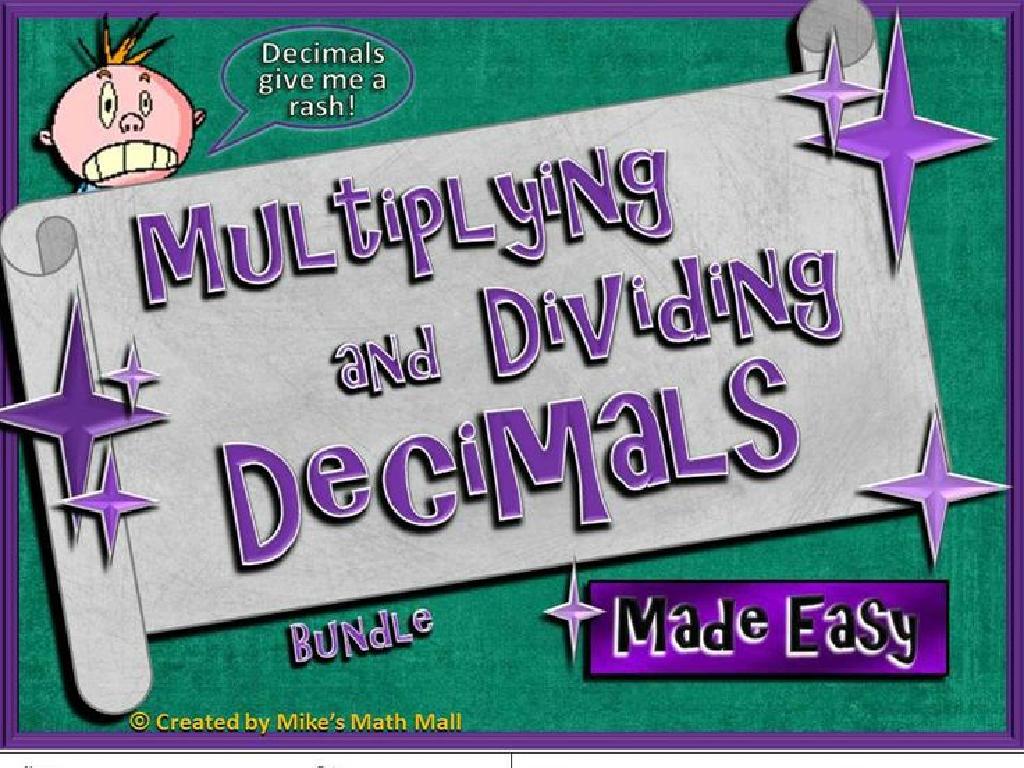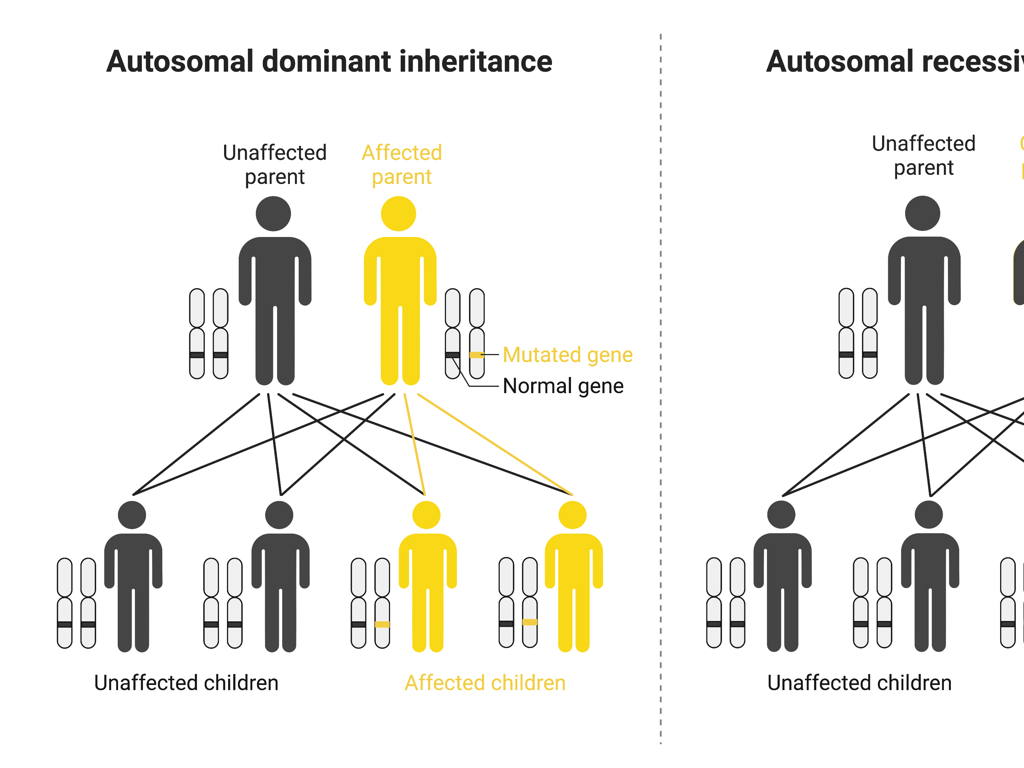Multi-Step Word Problems With Money
Subject: Math
Grade: Fourth grade
Topic: Money
Please LOG IN to download the presentation. Access is available to registered users only.
View More Content
Introduction to Money: Trading with Currency
– Money as a trade tool
– Money is used to buy and sell items instead of trading goods.
– Learn money denominations
– Pennies, nickels, dimes, quarters, and bills are all different values of money.
– Add and subtract money
– Use addition and subtraction to combine or separate amounts of money.
– Practice with word problems
|
This slide introduces students to the concept of money as a medium of exchange, replacing the barter system. It’s crucial to explain the various denominations of money, which are the building blocks of financial literacy. Emphasize the value of each coin and bill, and how they can be used in combination to make different amounts. Review the basic operations of addition and subtraction with money, ensuring students are comfortable combining and separating amounts. Incorporate multi-step word problems to apply these skills, which will help students understand the practical use of money in everyday life. Prepare to demonstrate examples on the board and have students practice with sample problems.
Understanding Multi-Step Word Problems
– Define multi-step word problems
A problem that requires more than one step to find the solution.
– Critical thinking in problem-solving
Thinking step by step helps to solve complex problems accurately.
– Single-step vs. multi-step examples
Single-step: ‘You buy a $5 toy. How much change from $10?’ Multi-step: ‘You buy a $5 toy and a $3 snack. How much change from $20?’
– Practice with money scenarios
|
This slide introduces students to multi-step word problems, which are problems that require more than one mathematical operation to solve. Emphasize the importance of critical thinking and tackling each step methodically to avoid mistakes. Compare and contrast single-step problems with multi-step problems to highlight the complexity and the need for a systematic approach. Provide money-related examples to make the concept relatable and to prepare students for the practical exercises that will follow, where they will practice solving multi-step word problems involving money.
Solving Multi-Step Money Word Problems
– Identify keywords in problems
– Look for ‘total’, ‘change’, ‘cost’, and ‘spent’.
– Break down problems into steps
– Solve one part at a time to make it easier.
– Use math operations with money
– Add, subtract, multiply, or divide amounts.
– Practice with real-world examples
– Use examples like shopping or saving allowance.
|
This slide aims to equip students with strategies to tackle multi-step word problems involving money. Start by highlighting the importance of identifying keywords that signal specific operations, such as ‘total’ for addition or ‘change’ for subtraction. Teach them to break down complex problems into smaller, more manageable steps, solving each part sequentially. Reinforce the use of basic arithmetic operations addition, subtraction, multiplication, and division in the context of money, ensuring students understand how to apply these to dollars and cents. Provide real-world examples, such as calculating the total cost of items during shopping or figuring out how much money is left after making a purchase, to illustrate these concepts. Encourage students to practice with examples from their daily lives to build confidence and proficiency.
Solving Multi-Step Money Problems
– Read the problem as a class
– Understand the question being asked
– What is the final goal of the problem?
– Discuss steps to find the solution
– Break down the problem into smaller, manageable steps
– Solve the problem together
– Apply math skills to calculate the answer
|
This slide is aimed at guiding students through the process of solving multi-step word problems involving money. Start by reading the problem aloud to ensure all students understand the context. Next, identify the key question: what does the problem want us to find out? Discuss with the class the steps needed to solve the problem, such as identifying relevant information, deciding on operations to use, and calculating each step carefully. Finally, work through the problem as a class, encouraging students to participate in finding the solution. This collaborative approach helps students understand the methodology behind solving complex problems and reinforces their arithmetic skills with practical applications.
Solving Multi-Step Money Problems
– Step 1: Total cost of items
– Add up prices to find total cost
– Step 2: Amount of money spent
– Subtract coupons or discounts from total
– Step 3: Calculate the change
– Subtract amount spent from money given
|
This slide is aimed at guiding fourth-grade students through the process of solving multi-step word problems involving money. Begin by explaining how to calculate the total cost of items by adding up their individual prices. Next, show how to determine the amount of money spent by considering any coupons or discounts and subtracting them from the total cost. Finally, teach students to calculate the change by subtracting the amount spent from the amount of money given to the cashier. Use relatable examples, such as buying school supplies or snacks, to illustrate each step. Encourage students to practice with different scenarios and to check their work at each step.
Multi-Step Money Problems: Practice Session
– Solve multi-step problems together
– We’ll tackle problems involving money calculations step by step.
– Explain your problem-solving steps
– Share how you figured out the solution; what math operations did you use?
– Discuss challenges faced
– Let’s talk about parts of the problem that were tricky.
– Address any questions
– No question is too small; every question is important!
|
This slide is for a collaborative classroom activity focused on solving multi-step word problems involving money. Start by presenting a problem to the class and work through it together, encouraging students to participate in each step. Ask them to explain their thought process and the mathematical operations they use, such as addition, subtraction, multiplication, or division. As you work through the problems, create an open environment where students feel comfortable discussing any difficulties they encounter and asking questions. This will help them understand the problem-solving process better and gain confidence in handling money-related math problems. For the teacher: Prepare a set of diverse problems with varying levels of complexity to cater to all students. Have strategies ready to guide students through common challenges, such as misinterpreting the question or making calculation errors.
Class Activity: Solving Money Scenarios
– Receive real-life money scenarios
– Work in groups on multi-step problems
– Find solutions and calculate carefully
– Use addition, subtraction, multiplication, or division as needed
– Present solutions and explain steps
– Share your group’s thinking process
|
This activity is designed to engage students with practical applications of math by solving real-life money scenarios. Divide the class into small groups and provide each with a different scenario that requires them to use various mathematical operations to solve multi-step word problems. Encourage collaboration and discussion within the groups to foster a deeper understanding of the concepts. After solving the problems, each group will present their solution to the class, explaining the steps they took and the reasoning behind their calculations. This will help students learn from each other and gain confidence in solving complex problems. Possible scenarios could include budgeting a family trip, making change from a purchase, or calculating the cost of items after a discount.
Wrapping Up: Money Word Problems
– Review of multi-step problems
– Practice makes perfect
– Solving these problems helps with real-life math skills.
– Homework: More money problems
– Solve assigned problems for more practice.
– Keep practicing at home!
|
As we conclude today’s lesson, it’s important to recap the key points about solving multi-step word problems involving money. Emphasize to the students the value of practice in mastering these skills, as they are not only relevant to their current studies but also to everyday life. Distribute the homework, which consists of additional problems for them to tackle. This will reinforce what they’ve learned and help them become more confident in approaching complex problems. Encourage them to try solving the problems on their own before seeking help to build their problem-solving abilities.





